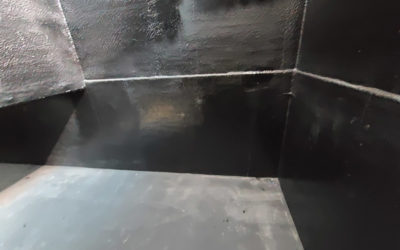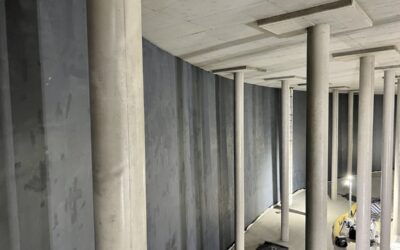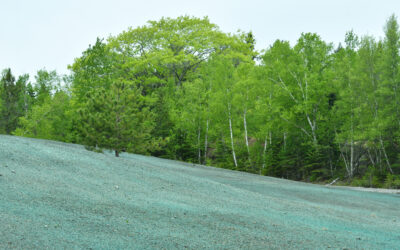If your facility is at risk for experiencing a spill or leak, you need a comprehensive and durable containment solution to mitigate hazardous environmental exposure. And if your facility has already experienced a spill or leak, you need a solution fast.
When it comes to containment and waste management, US FUSION is your expert in rapid response and problem solving. We make sufficient repairs, we prevent future disasters, and we commonly do it using geosynthetic clay liners.
Below, we’ll walk through what geosynthetic clay liners are, as well as a few common applications for geosynthetic clay liners.
What Are Geosynthetic Clay Liners?
Geosynthetic clay liner systems are hydraulic barriers manufactured with a variety of low-impermeability materials and supporting geotextiles and geomembranes. All of these materials are adhered with chemical adhesives and mechanical processes like extrusion.
Geosynthetic clay liners are primarily used for waste management and containment. There are a number of environmental laws set by regulating agencies that require any potentially harmful seepage to be contained and disposed of properly — otherwise, these hazardous materials could cause major environmental and health issues. Although there are many containment methods available, geosynthetic clay liners provide great benefits in terms of fast installation, durability, and cost-effectiveness.
5 Geosynthetic Clay Liner Applications
Geosynthetic clay liner systems can benefit a number of containment applications. In this article, we’ll walk through just five of the most common:
1. Geosynthetic Clay Liners for Landfills
Landfills are specifically built to contain and manage waste in a responsible, effective manner. When they’re managed improperly, they can be one of the biggest contributing factors to environmental damage.
Landfills need a containment solution to prevent solid and liquid garbage waste from seeping into the soil and contaminating the surrounding groundwater and environment. That solution often involves geosynthetic clay liners, which are proven to ensure protected, safe conditions for years to come.
2. API Tanks & Foundation Liners
API stands for the American Petroleum Institute, which is an industry authority on all things oil. They’ve established standards for the design and fabrication of steel storage tanks that store oil, gasoline, and chemicals. One such API standard is the requirement that API tanks be lined with a low-permeability solution at the bottom to prevent damage from leaks or spills. There are also some API tank applications that require another layer of lining on the foundation where the tank is set, providing maximum environmental protection.
3. Geosynthetic Clay Liners for Ponds
Geosynthetic clay liners aren’t just great for managing harmful materials — they’re also great for containing something as pure as water in a designated area. One instance where this is helpful is lining a pond.
While some ponds have natural clay bottoms that provide enough of a barrier, some require an artificial or custom-fabricated solution. Installing a geosynthetic clay liner, then adding the proper soil cover, is a great option for keeping necessary water in the pond, while also blocking sediment and other debris from entering it — preserving its natural, ecological beauty and all that resides within it.
4. Earthen Spill Containment Berms
Earthen spill containment berms are containment areas with earthen walls that can vary in size They’re built to prevent hazardous materials from spilling and contaminating the environment, and they’re most commonly placed underneath high-risk devices like oil drums and tanks.
Geosynthetic clay liners can provide spill containment berms with an extra layer of protection. When placed on the surface of the berm, they’re covered with the proper soil cover, and then they can contain any spills and prevent rough terrain like rocks or sticks from poking through and causing contamination.
5. Secondary Containment Dikes, Berms & Levees
Secondary containment is an essential safeguard in stopping the release of spills. In the event that your primary containment system fails, having a backup can save you and the environment from a lot of costly damage. The versatility and durability of geosynthetic clay liner systems make them the ultimate backup for complete compliance and safety.
If you need a comprehensive containment solution for your application, you can trust US FUSION to deliver excellence. With decades of experience using a wide range of geosynthetic and secondary containment products, our rapid response, quality workmanship, and dedication to environmental responsibility show in all steps of our process. Give us a call or contact us online so we can help find the most effective option for your application.







